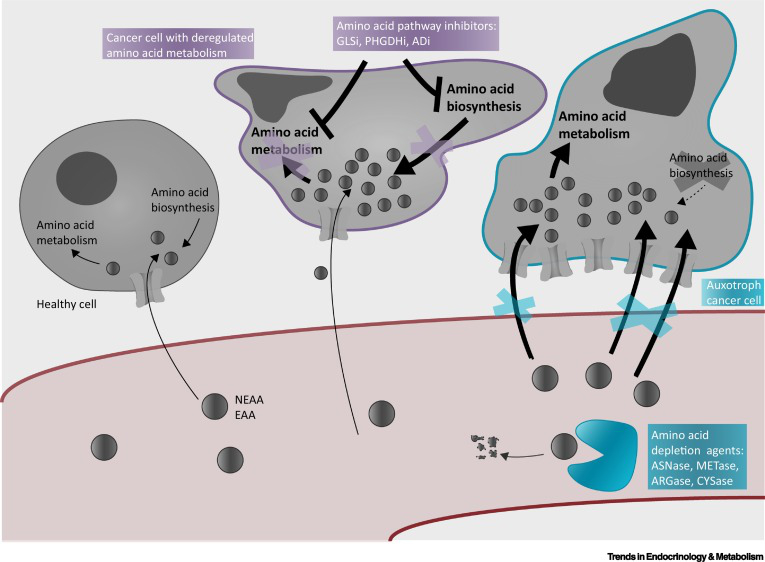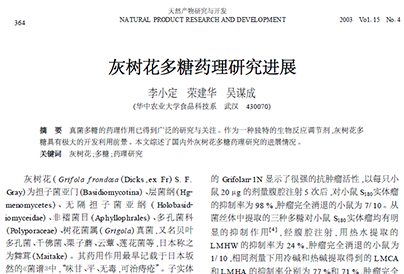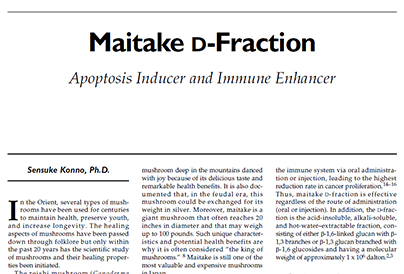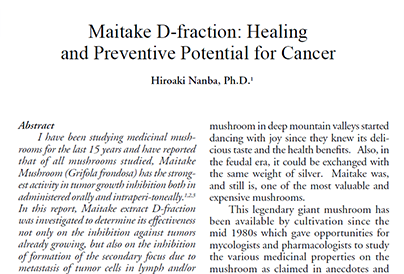In the past decades, the progress of chemotherapy and the emergence of immunotherapy and targeted therapy have significantly improved the survival rate of cancer patients. However, for some cancer patients, the subsequent "sequelae" has seriously affected the quality of life. Therefore, how to reduce the side effects of cancer therapy and improve the quality of life of patients has become the focus of scientists for a long time.
Unlike normal cells, cancer cells can proliferate indefinitely and destroy normal cell tissues. In order to meet the needs of proliferation, cancer cells will improve metabolism efficiency and absorb more nutrients. Amino acids, as an important energy source, are undoubtedly a core support for the development of cancer cells, which provides a cutting-off entrance for people to prevent cancer progress. In the 1950s, the concept of amino acid imbalance (AAI) opened the stage of people's exploration to change amino acid intake to affect the progress of cancer.
Recently, researchers at the pediatric tumor center of Princess masima, Netherlands published a review article entitled amino acid completion strategies:starting cancer cells to death in the sub issue of "cells in Endocrinology & metabolism" (if:11.641), which describes the biological principles behind the dependence of tumor specific amino acids, And the idea of using this "soft rib" of cancer cells to improve the existing cancer therapy.
Target of amino acid consumption therapy
The changes of amino acid metabolism pathway in tumor cells are often driven by many signal pathways and transcription factors. At present, the methods of targeting amino acid metabolism can be developed from the aspects of inhibiting amino acid transporters, amino acid biosynthesis and amino acid consumption. This review mainly discusses the different targets and clinical application challenges of amino acid consumption therapy.

Schematic diagram of different strategies for targeting amino acid metabolism
Asparagine
So far, asparagine (ASN) is the most successful and most successful target in the treatment of amino acid consumption. Especially in children with acute lymphoblastic leukemia, the introduction of asparaginase has greatly improved the cure rate. Moreover, in 2018, two studies published in nature and cell metabolism showed that ASN can stimulate glutamine biosynthesis, and high levels of ASN can even promote epithelial mesenchymal transformation, which is a key factor in the drive of cancer metastasis.
Glutamine
Glutamine (Gln) is the most free amino acid in the body. It can be converted into glutamate by GLS, which provides the key energy for energy metabolism of tumor cells. The results show that the tumor driven by c-myc or KRAS is very dependent on exogenous Gln. The pharmacological inhibition of GLS has shown remarkable results in three negative breast cancer (TNBC), acute myeloid leukemia (AML) and non-small cell lung cancer. At present, a GLS inhibitor has entered the stage 2 clinical stage of hematoma and solid tumor.
Arginine
Arginine (ARG) is an amino acid compound, which can be synthesized by glutamine (Gln) and proline (pro). In the nutritional deficient tumor, the lack of arginine induces autophagy and apoptosis of tumor cells, but normal cells can survive in this state. The use of argase or bacterial arginine deiminase can promote the consumption of Arg, and the early stage of cancer in the juvenile patients who are relapsed / refractory cancer will bring the light of anti-cancer.
Methionine
Methionine (MET) is one of the essential amino acids and the most important methyl donor in human body, which affects the biosynthesis and metabolism. Therefore, these substances are the main candidate targets for amino acid depletion therapy, especially in the tumor driven by epigenetic modification mutation. The mice experiment showed that the restriction of met intake could prevent the growth of three negative breast cancer, colorectal cancer, sarcoma, glioma and other tumors, and inhibit the metastasis of cancer cells. A preliminary clinical study published in nutrition and cancer in 2002 further proved the clinical safety of the method.
Serine
Serine is a kind of non essential amino acid which depends on food intake, and plays a role in the metabolism of fat and fatty acids and the growth of muscles. Tumor can use serine biosynthesis pathway to reduce dependence on exogenous supply by controlling the expression of related enzymes. Pre clinical studies showed that limiting the intake of serine and glycine significantly inhibited the proliferation of tumor cells in intestinal cancer and lymphoma mice.
Cysteine
Cysteine is one of the few sulfur-containing amino acids, which is very important for the oxidation-reduction stability. The results showed that the depletion of Cys could reduce the proliferation of prostate cancer and chronic lymphoblastic leukemia and improve the survival rate of mice.
Factors influencing the effect of amino acid intervention
Different intervention strategies
Although amino acids consumption is a potential anti-tumor strategy, in some cases, increasing the abundance of specific amino acids may have antitumor effect. A 2020 article in nature communications pointed out that glutamine supplementation can block the growth of melanoma by affecting epigenetic reprogramming. In nature 2018, it was pointed out that histidine supplementation increased the sensitivity of leukemia xenotransplantation model to methotrexate.
Location of tumor
The influence of amino acid intervention on tumor development is not only related to the type of tumor, but also depends on external factors including tumor location. In the primary or metastatic sites, there are differences in the metabolism and nutritional requirements of tumor cells, such as when breast cancer cells are transferred to the lungs, serine biosynthesis is up regulated to support the growth signal of rapamycin complex 1 (mTORC1).

The effect of amino acid intervention depends on many factors
Immune surveillance
T-lymphocytes are the main force of human body against cancer cells. Unfortunately, cancer cells are better than T cells in terms of "snatching" amino acids, thus affecting the immune monitoring effect of human body. In this regard, amino acid depletion therapy can weaken the function of immune cells. However, some studies have confirmed that the consumption of some amino acids has the immune stimulation effect, which can further improve the killing effect of immune cells on tumor cells.
The prospect and challenge of amino acid consumption therapy
In the combination with different cancer therapies, the strategy of amino acid consumption can further improve the "power" of "partner". When combined with chemotherapy, amino acids consumption can induce normal cells to enter the cell cycle stagnation stage, protect them from chemotherapy and increase the intensity of cancer cell attack. In addition, amino acid consumption therapy may help to counteract the intracellular mechanism of drug resistance and reduce the dependence of patients on chemotherapy drugs.
Of course, the method of amino acid consumption is also facing the problem of drug resistance. The lack of effective amino acid depletion may only keep the tumor cells at rest. Once the treatment is terminated, the tumor cells will come back. In addition, the cells in tumor microenvironment may also affect the utilization of amino acids.
Compared with other treatments, amino acid consumption therapy is safer and less harmful to normal cells. Before this therapy is widely used in clinical practice, it is still necessary to explore the metabolic sensitivity of different cancer cells to amino acids. Meanwhile, the combination of amino acid consumption therapy and targeted drugs may be a potential anti-cancer strategy due to the resistance of single therapy.
Source address:
https://www.medsci.cn/article/show_ article.do?id=1b20209e732f
Original origin:
Miriam Butler, et al. Amino Acid Depletion Therapies: Starving Cancer Cells to Death. Trends in Endocrinology& Metabolism, 2021.













